Bosch Random Orbital Sander review
I’ve had a LOT of different sanders over the years: belt, square, little triangle shaped ones…but the random orbital sander is my Go-To. I just recently bought another one and wanted to give you a quick review. The reason I had to buy another one was because I was in the middle of sanding my library when the hook and loop on my old one died.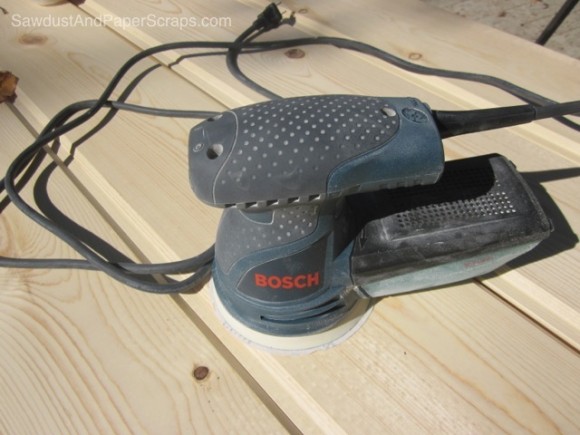 I went to Home Depot and held each one of their sanders in my hand. I wanted to find one that fit in my hand and that wasn’t too heavy. Two complaints I had with my last random orbital sander.
I went to Home Depot and held each one of their sanders in my hand. I wanted to find one that fit in my hand and that wasn’t too heavy. Two complaints I had with my last random orbital sander.
I chose a Bosch random orbital sander because it fit those requirements the best.
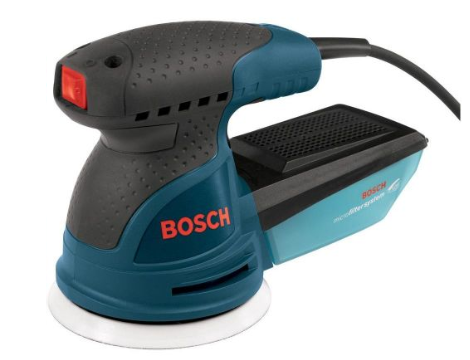
It fits in my grip perfectly and feels about half the weight of my old one.
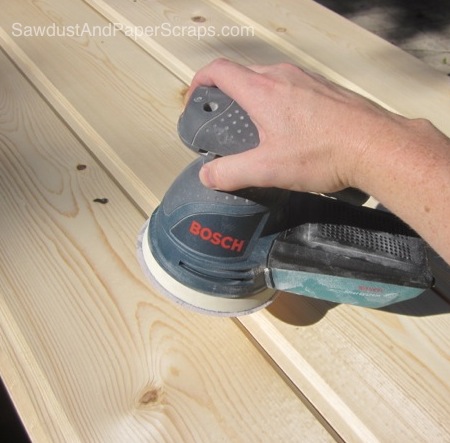
I always buy hook and loop because it is so quick and easy to change the sanding disc. Eventually the hook part on the sander can wear out but that is replaceable.
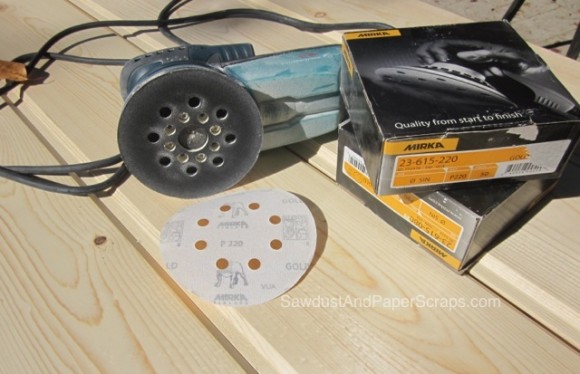
There are two more awesome features that I didn’t even know were possibilities (it’s been about 5 years since I bought my last one).
1. It has the added benefit of having a vibration reduction feature. SWEET! Seriously, after sanding for a couple hours, my hand and arm will feel like … well, like when you take a metal rod and hit it hard against another metal rod. Kind of vibratey. It’s not fun. So — I was SUPER excited about that feature.
2. It has a fancy schmancy filter in the dust caniser that catches super fine dust. I was sold.
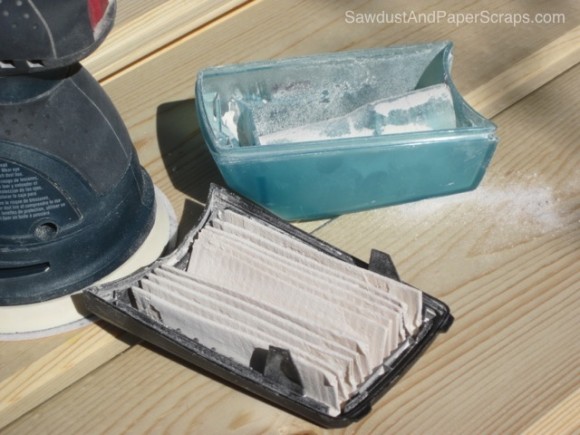
I get asked all the time for recommendations for tools that one should invest in when they want to get started in building their own furniture and cabinetry. A random orbital sander is definitely one of the first items to add to your power tool arsenal. You might not want to spend $70 on the Bosch Random Orbital Sander so I’ll tell you the features I always look for when selecting my sanders and you can shop around for something that will fit your needs and budget.
What to look for in a random orbital sander:
- Variable speed: because sometimes you need to s…l…o…w …it …down. It’s a gut thing.
- Some wood fillers aren’t supposed to be sanded with a motorized sander because it can knock it loose completely– but you might be ok if you just use a slow speed.
- Also, sanding a piece painted with latex enamel can cause the paint to soften and gum up on your sanding pad from the heat cased by friction. Sometimes if you slow it down it helps — a bit.
- Why Random Orbital? Random orbital means that the sanding pad rotates and also gyrates so you get sanding motion in a whole lot of different directions. All you have to do is guide the sander and let it do it’s thang!
- I look at maximum RPM’s. How fast will that baby go? Compare all the units you are considering. This one does 12,000 rpm’s. I wouldn’t want one that only got up to …like 8000. When I want to remove a lot of material, I use a course grit sandpaper and run it full blast. I do that a lot because my projects usually have to be coaxed into perfection.
- How does it feel in your hand?
- Dust collection. You don’t want it all flying around in your face.
How to use a random orbital sander.
- Start with a course grit and move up to fine. I generally start with 80 then move up to 120 and finish with 220.
- Don’t apply pressure. Just let the weight of the sander do the work. All you have to do is guide it.
- Keep it moving. Even thought the sander is orbiting randomly and kind of moving in a whole lot of directions, I still move it along with the grain of the wood. I honestly don’t think it matters what direction you move it. Just keep it moving. Unless you want to sand your surface unevenly, then by all means, hold it in one spot and sand away. Ha!
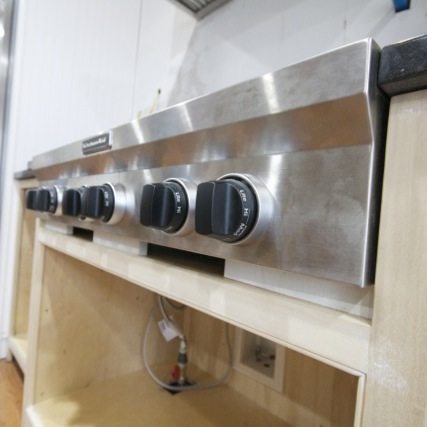
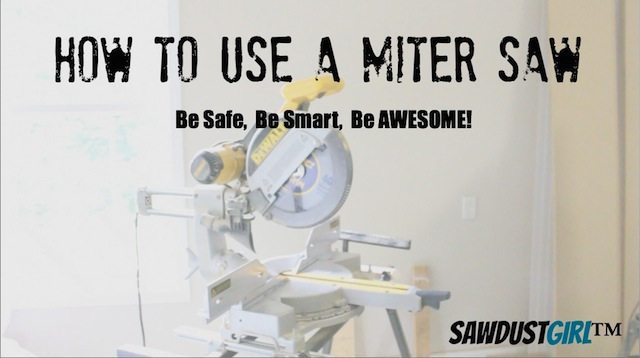
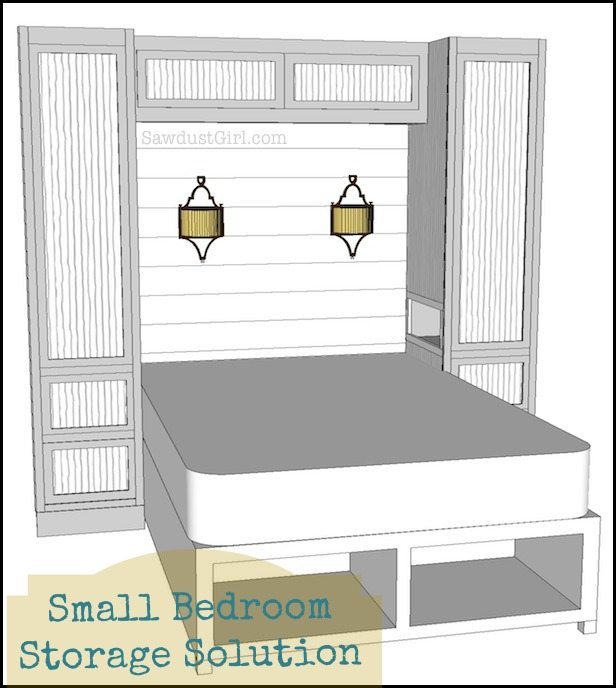
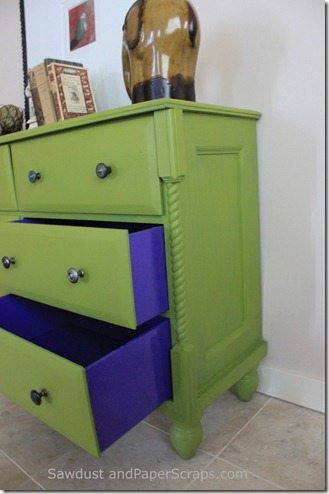

You may be applying too much pressure. Just let the sander to the work and don’t push. And work down from a low grit to higher grit in sequence ending with 220 or higher.